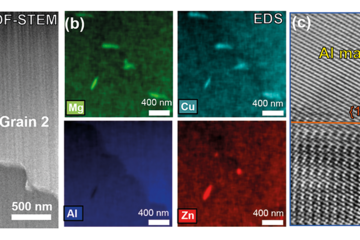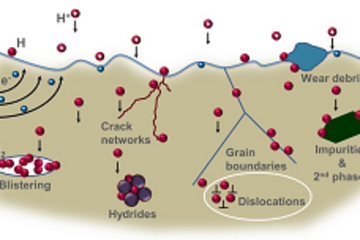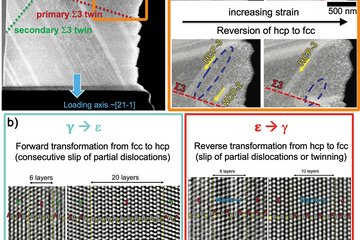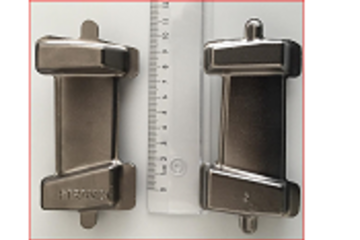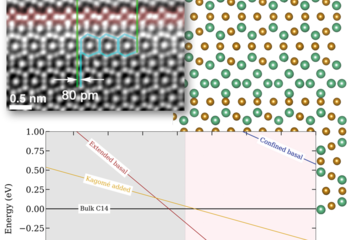All genres
21.
Journal Article
Phase-Stable Palladium Hydride Derived from PdCoO2 for Sustainable Hydrogen Evolution Reaction. Advanced Functional Materials, e14366 (2025)
22.
Journal Article
Atom Probe Tomography of Hydrated Biomacromolecules: Preliminary Results. Microscopy and Microanalysis 31 (4), ozaf075 (2025)
23.
Journal Article
Understanding the Al diffusion pathway during atmospheric corrosion of a Mg-Al alloy using atom probe tomography. Corrosion Science 252, 112951 (2025)
24.
Journal Article
Mapping the Path to Cryogenic Atom Probe Tomography Analysis of Biomolecules. Microscopy and Microanalysis 31 (4), ozaf032 (2025)
25.
Journal Article
Advancing Sodium-Ion Battery Cathode Analysis With Cryogenic Ag-coated APT Specimens. Microscopy and Microanalysis 31 (4), ozaf041 (2025)
26.
Journal Article
Boron triggers grain boundary structural transformation in steel. Nature Communications 16 (1), 6927 (2025)
27.
Journal Article
Flowing and Freezing: Correlative Operando Liquid Cell Electrochemistry and Cryogenic Atom Probe Tomography of Nanoscale Liquid-Solid Interfaces. Microscopy and Microanalysis 31 (7), pp. 261 - 263 (2025)
28.
Journal Article
Where is my Ion? Correlative STEM and APT Analysis of Low-Dose Magnetic Ion Implantation in Ferroelectric Materials. Microscopy and Microanalysis 31 (7), pp. 1136 - 1138 (2025)
29.
Journal Article
A Nanoscale Investigation of Plasma Electrolytic Oxidation Coatings on Mg Alloy: The Role of Electrolyte. Microscopy and Microanalysis 31 (Supplement_1) (2025)
30.
Journal Article
Insights into Nanoparticles Formation Achieved by Powder Metallurgy Processing Routes of Zn-Mg-(Ag) Alloys for Bioresorbable Implants. Microscopy and Microanalysis 31 (7), pp. 267 - 268 (2025)
31.
Journal Article
Cold to Go: Cryogenic Atom Probe Tomography to Investigate the Nanoscale Solid-Liquid Interfaces of SnSe Anodes for Next-Generation Batteries. Microscopy and Microanalysis 31 (7), pp. 664 - 666 (2025)
32.
Journal Article
An Atomic-Scale View at g'-Fe4N as Hydrogen Barrier Material. Advanced Materials Interfaces 12 (13), 2500207 (2025)
33.
Journal Article
Advancing Atom Probe Tomography of SrTiO3: Measurement Methodology and Impurity Detection Limits. Microscopy and Microanalysis 31 (3), ozaf051 (2025)
34.
Journal Article
From impurity ingress to high-performance doping: A perspective on atom probe tomography in energy materials. Scripta Materialia 262, 116648 (2025)
35.
Journal Article
Influence of chemical composition and microstructure on fatigue performance of reinforcing steel. Journal of Materials Research and Technology 36, pp. 2589 - 2599 (2025)
36.
Journal Article
Advancing atom probe tomography capabilities to understand bone microstructures at near-atomic scale. Acta Biomaterialia 198, pp. 319 - 333 (2025)
37.
Journal Article
Structurally complex phase engineering enables hydrogen-tolerant Al alloys. Nature 641 (8062), pp. 358 - 364 (2025)
38.
Journal Article
Ultrasonically Deposited Boron-Doped Silicon Decorated with Laser-Generated Iridium Nanoparticles as Manufacturing Approach for OER Electrodes in PEM Water Electrolysis. Advanced Materials Interfaces 12 (8), 2400765 (2025)
39.
Journal Article
Using Spinodal Decomposition to Investigate Diffusion Enhancement and Vacancy Population. Advanced Science 12 (14), 2412060 (2025)
40.
Journal Article
Understanding high coercivity in ThMn12-type Sm–Zr–Fe–Co–Ti permanent magnet powders through nanoscale analysis. Scripta Materialia 259, 116537 (2025)




